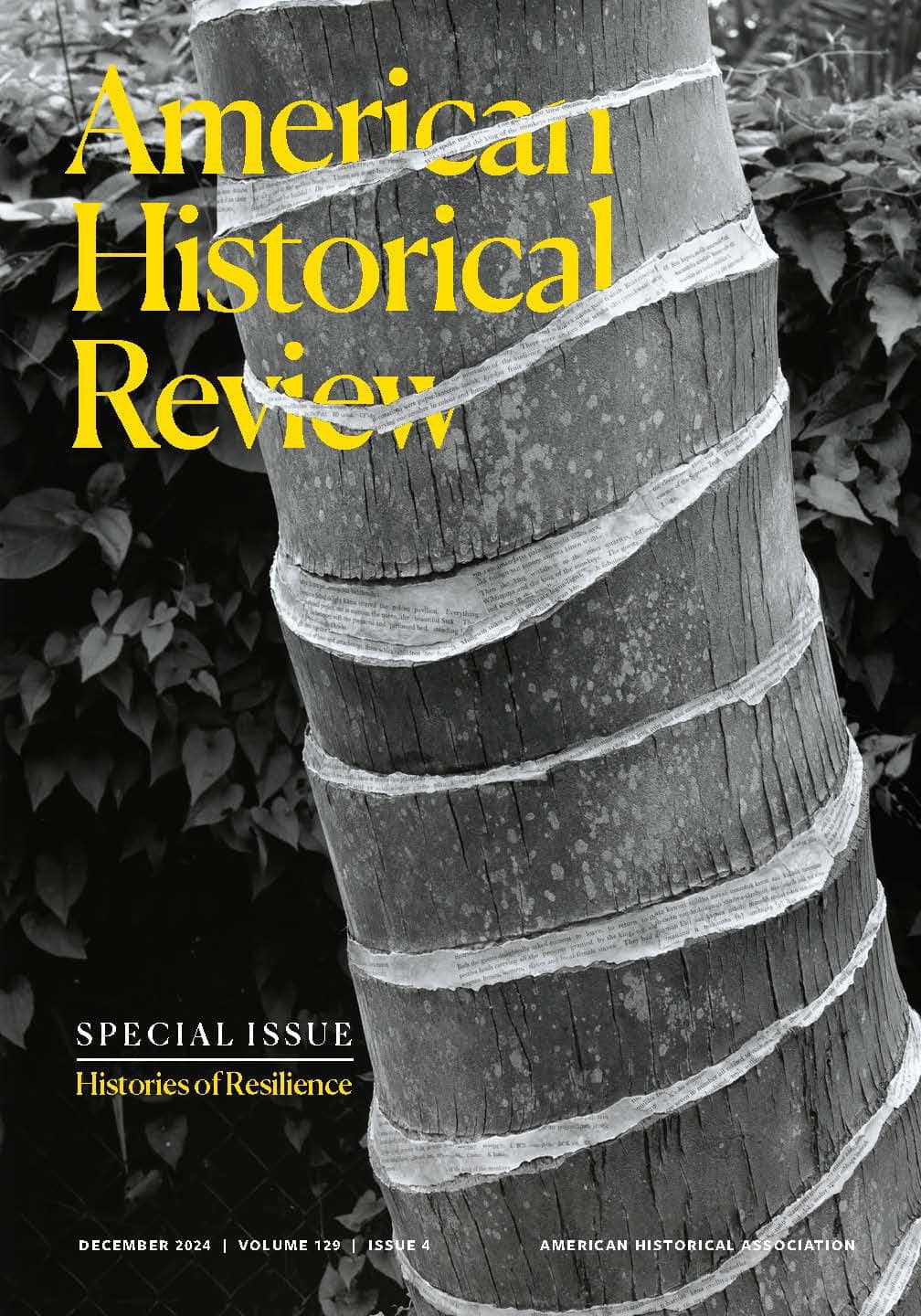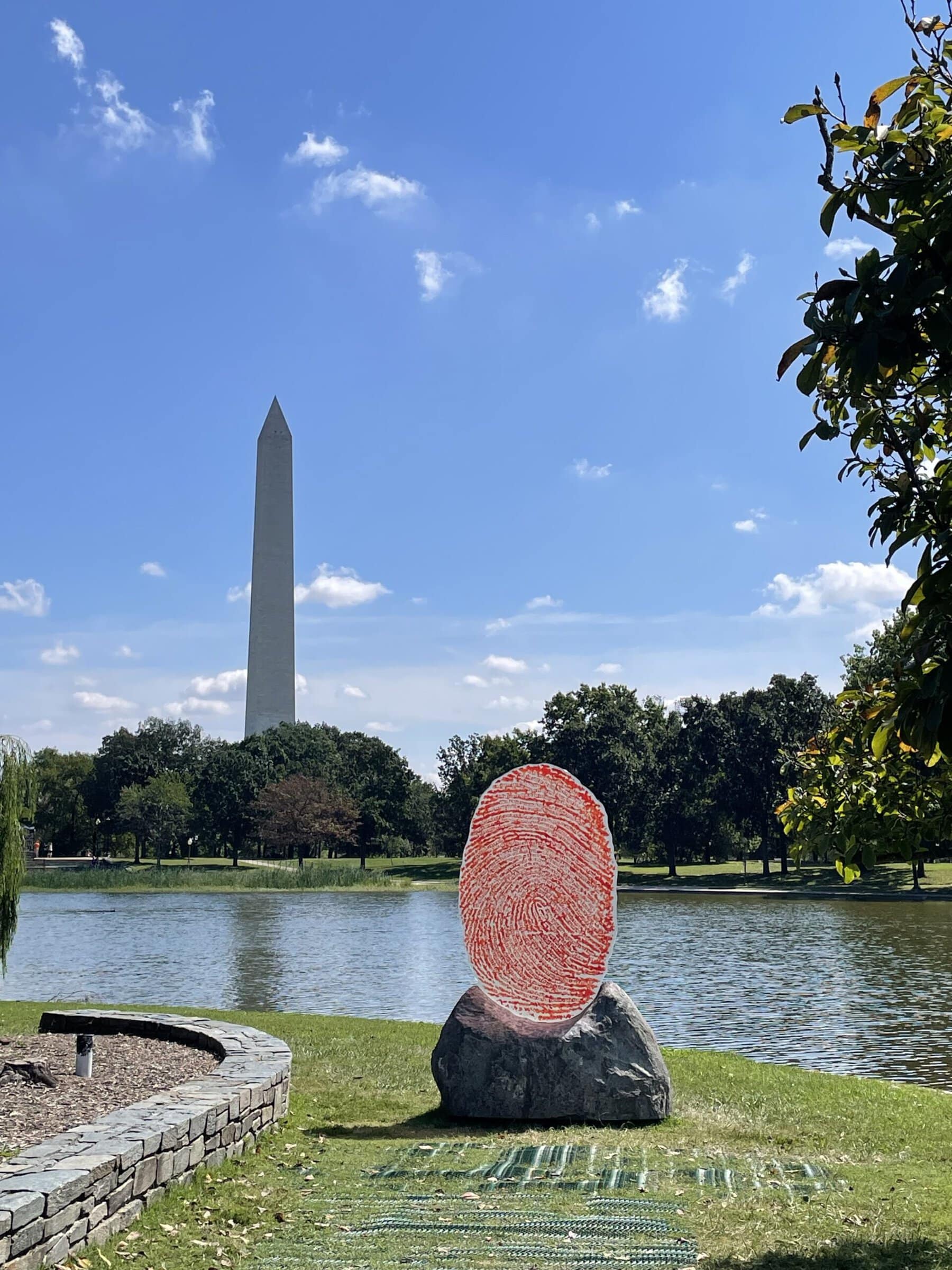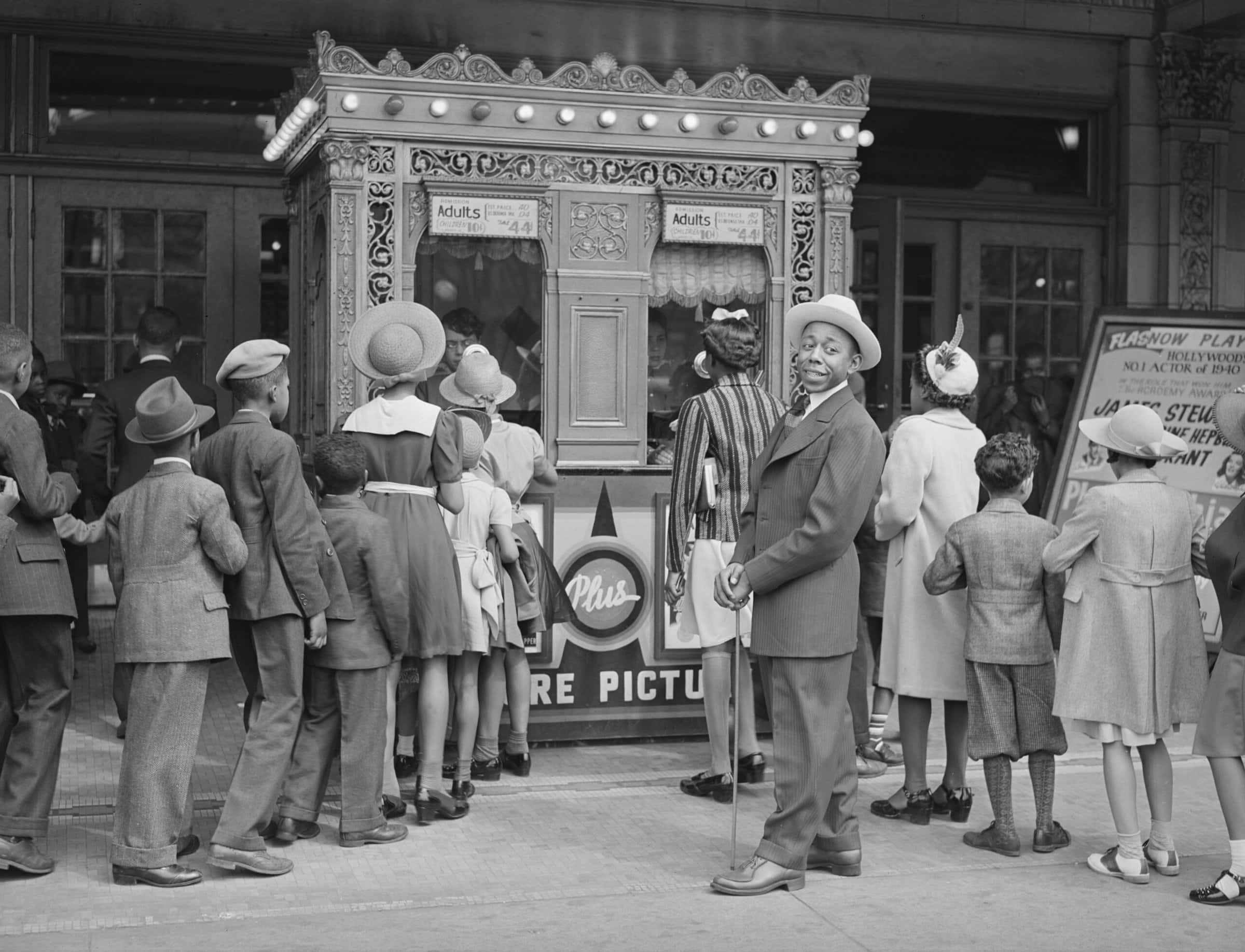It is fitting, producer Ken Burns explains in the promotional brochure for his new series, that his pursuit of America’s past should now take him west. For Burns, “the history of the West,” like that of the Civil War and baseball, “speaks clearly and frankly about who we are” as Americans. Acting as executive producer, Burns, with director Stephen Ives and an advisory panel of distinguished historians, presents to the nation his imagining of “what America is because of the West.” Titled simply The West, the new production has 8 episodes and runs 12½ hours. Often poignant, occasionally riveting, and always worth watching, it is the best of the several recent documentaries to ponder America’s westward expansion. And yet for all its splendid ambition to weave together “a diverse, utterly American family drama,” the film sometimes falls short in its search for a broader past and a deeper understanding of what the West has meant for America.
The West as America might have been an appropriate title for this production, but it was used five years ago by a much-talked-about exhibition at the National Museum of American Art. In the press, critics ridiculed that show’s slash-and-burn readings of “western art.” In Congress, conservatives assailed the curators for slanting the interpretation of 19th-century paintings to turn once-proud symbols of America’s triumphant expansion into artifacts of appalling conquest. In scholarly circles, “the West as America” quickly became synonymous with a “new western history”; detractors claimed this history had rewritten the past as a course in “failure studies.”
The accusations of excessive negativism leveled against the National Museum of American Art’s exhibition have also dogged other recent documentaries about European colonialism and American westward expansion. In the last five years, television viewers have seen the conquest of Indian America examined in 500 Nations,How the West Was Lost, and The Way West (a six-hour production helmed by Burns’s brother Ric). According to some critics, these “docuwesterns” owed less to new scholarship than they did to Kevin Costner’s Dances with Wolves. Like Costner’s epic, these versions of western history not only exposed the darker sides of American expansion, but also fabricated their own myths of lost Edenic Indian worlds. And by dwelling on what went wrong in the American West, they highlighted what’s worst about America.
The Balanced West
What’s best—or at least better—about The West is its quest for balance. “For too long,” observes Burns, “we celebrated a lily-white version of the West: sturdy pioneers fighting savage Native Americans,” but of late “we [have] subscribed to a history in which the European contribution was entirely bankrupt and everything Native Americans did was perfect.” In The West, Burns aims for a “more complicated” and “more compelling” history—one that embraces the many peoples of the West and acknowledges the “tragic casualties of Manifest Destiny,” yet still celebrates the accomplishments of Anglo-westerners, especially their “nation building.”
What unites these contradictory stories is the film’s attention to possibility, to the various dreams that brought men and women from across the oceans, from the south, and from the east to the West. In this telling, as in the best new scholarship, the region between the Mississippi and the Pacific becomes “the ultimate four-way stop sign in American history.” In the 19th-century West, peoples hailing from all points of the compass mingled—Indians seeking to hold on to their homelands, Mexicans seeking a place in what had been northern Mexico, Mormons seeking a refuge from persecution, Chinese seeking a piece of the “gold mountain,” African Americans seeking to escape the legacy of slavery, and Anglo-Americans seeking to have it all. Not all dreams were possible; indeed, most did not come true. But somehow, The West insists, the land retained its mythic power and remained “a geography of hope.”
Chief among the stories that The West tells is that of Indians and their ruinous encounters with Europeans. The film glances first at the West’s pre-Columbian past, and Indian peoples remain at or near the center through each of the eight episodes. As the history of conquest and its legacy unfolds across the 19th century, viewers hear the voices and visions of notable Indian leaders. Sitting Bull and Chief Joseph are prominently featured, and their words haunt the last three episodes. But the film refuses to simplify the struggles of these and other Indians or to rhapsodize their existence before the invasion of Europeans. In setting up Sitting Bull’s struggle to keep the Black Hills, The West describes the Lakotas’s own history of conquest on the northern Plains. Indeed, Lakotas, past and present, boast of the success of their peoples in warfare against other Indians on the northern Plains. Depiction of intertribal and intratribal conflicts adds a welcome complexity to what has too often been depicted as a mere two-sided struggle for control of the West.
In contrast to other chronicles of Indian last stands, The West does not end with Sitting Bull’s murder and the suppression of Lakota Ghost Dancers at Wounded Knee. Indians, after all, did not vanish in 1890, and The West movingly tracks the struggles of Native Americans beyond the final massacre. In the finale, the film introduces us to Buffalo Bird Woman and her brother Wolf Chief. The former rejected all efforts of whites to reform her ways. The latter, by contrast, adjusted to the commercial system preached by American officials, converted at least partially to Christianity, and corresponded with presidents in hopes of improving conditions on his reservation.
In this postconquest saga, Chief Joseph gets the last word. His death in 1904, more than a quarter of a century after his pledge to “fight no more forever,” closes The West. Mixing Buffalo Bird Woman’s traditionalism and Wolf Chief’s pragmatism, Chief Joseph recognized that his people would have to find new ways to survive in a new world, but he maintained his adherence to old beliefs and practices. His greatest wish was to return to the lands of his Nez Perce ancestors. To that end, he asked a white friend to give him a horse. Like so much in the history of Indian-white relations, the request was misunderstood, the gift was not given, and Joseph died without making it home. But in Chief Joseph’s story, as well as those of Sitting Bull, Buffalo Bird Woman, Wolf Chief, and the other Indians featured in The West, we glimpse the heroic resistance and equally valiant accommodations, the far-reaching transformations and even more remarkable persistence of Native Americans.
Lest The West be faulted for focusing only on Manifest Destiny’s disinherited, the story that precedes Chief Joseph’s denouement strikes a different, though no less touching, chord. The eighth episode picks up the lives of John Love and Ethel Waxham, and The West devotes more time to their story than to any other. Earlier in the episode, the film acquaints us with Love, a Scottish immigrant whose travels and dreams eventually landed him on a ranch in a remote Wyoming valley, and Waxham, a Wellesley graduate whose love of adventure and stint as a teacher brought her to the same corner of the West in the early 20th century. In the finest Burns style, actors read the letters the two sent to each other, appropriately sentimental music plays in the background, and the camera scrutinizes vintage photographs or offers sweeping panoramas of the forbidding, yet magnificent, landscape in which Love raised sheep and Waxham taught school. Following a lengthy courtship, Love, after many rejections, finally gets Waxham to accept his proposal.
The West, however, is not about happily ever afters. Throughout their married life, Ethel and John experienced many trials. After a flood ruined all of the improvements they had made to their ranch and caused a bank to foreclose on their sheep loans, John punned that it was a case of “Love’s labor lost.” Again and again, the climate conspired against the couple’s dreams. Yet after each setback, they rebuilt, and neither lost the taste for what Ethel called the “ranchiest of ranch life.” Theirs, one of the Love’s sons suggests, is the tale of all the “survivors” who stuck it out. In that spirit, the filmmakers serve up the Loves as a tribute to the grit of westerners, to the persevering spirit that allowed so many, if not to triumph over adversity, then at least to battle it to a stalemate.
The New West
That the sagas of survivors, both Indian and white, carry into the 20th century represents something relatively new in western history. Officially, the final episode of The West covers the years from 1887 to 1914, but the concluding date does not mark a moment of closure or transition. Instead, the film seems to follow Patricia Limerick’s interpretation of the region’s “unbroken past,” treating the West of the 20th century as an extension of its 19th-century history. In Limerick’s Legacy of Conquest, the old orthodoxy of Frederick Jackson Turner, which had, among other things, closed the frontier (and western history) in 1890, faced a withering frontal assault; in The West, the challenge to Turner’s thesis is handled more quietly. The script grants Turner only a single, passing mention. Reflecting the maturation of a new western history, the film does not argue with Turner; it simply ignores him. Here, The West borrows a page from Richard White, whose western history textbook, It’s Your Misfortune and None of My Own, dispensed with Turner in a similar manner.
White’s influence is obvious in other ways as well. As one of the more prominently featured commentators, White articulates the major themes of The West. In remarks that open and close the film, he speaks to the conflicting possibilities that drew peoples to the West, reflects on the fluid character of relations between different groups in the region, and suggests how, in conquering and incorporating the lands between the Mississippi and the Pacific, the American nation “found itself.”
Unfortunately, The West does not always have a story that can amplify White’s remarks. The West is most vivid when mining the lives of the famous and forgotten, yet not all themes lend themselves to biographical vignettes. “Nation building,” for example, does not translate well to Burns-style storytelling. In It’s Your Misfortune and None of My Own, White ably synthesized recent scholarship by accenting the relationship between the West and Washington. More than any other region of the nation, the West depended for its development on the military power, the managerial expertise, and the massive expenditures of the federal government. In exercising these functions, the federal government was able to expand its scope and authority; thus, the West, in White’s words, served as “the kindergarten of the American state.” The West by no means neglects the growth of federal power. In its depiction of the building of the transcontinental railroad in the 19th century and the gathering of water for Los Angeles in the 20th, the film takes note of the national government’s conspicuous role. But the effect is not the same as when The West relates more personal dramas.
Nor does The West address changes in the land as thoroughly as might be expected. Unlike nation building, whose progress was often abstract, the transformations of western landscapes and waterways left powerful and visible testimony. To be sure, this evidence is not entirely overlooked. In addition to the plunder of the Owens Valley by Los Angeles, the film features the extermination of the buffalo, records the overgrazing of the range, and ruminates on the ravages of mining. A photograph of Butte, Montana, nearly obliterated from view by the smoke from its many copper smelters, tells volumes. Still, considering the significance of the environment to recent scholarship in western history, the film’s relative indifference to biotic possibilities comes as a surprise.
By and large, The West slights the links between nation building and the fate of the region’s fragile, mostly arid environment. Already in the late 19th century, the shock of blighted landscapes and the awareness of resource depletion spurred the beginnings of a conservation movement. The film, however, omits these shifts in public consciousness and misses as well the resulting changes in federal land policy. Interestingly, the film devotes a segment to Theodore Roosevelt’s years as a Dakota rancher, marveling at how this “dude” took to the strenuous life and fell in love with the West. But there it drops Roosevelt, losing a chance to detail his (and other federal officials’) subsequent efforts to prohibit private development in portions of the nation’s western domain.
The Greater West
More troubling than any weaknesses in the film’s coverage of 19th-century issues is The West‘s truncated time frame and limited geographic range. To its credit, the film extends into the 20th century, yet the focus remains very much on the 19th—especially on the period after 1848. Because one episode deals with the first half of the 19th century and six more track developments after the Mexican War, The West crams all history before 1806 into a single program. That hardly seems balanced.
In the hour or so before Lewis and Clark enter The West, the film takes a stab at the diversity of pre-Columbian Indian cultures, at the dynamism of Native American civilizations, and at the transformations in indigenous worlds wrought by Spanish soldiers, settlers, and missionaries. An affecting sequence recounts the wanderings of Cabeza de Vaca across what is now the American southwest. Emphasizing his ability to live peacefully among the peoples whom he encountered, The West broaches the possibility of harmonious relations between Europeans and Indians. But the press to reach the 19th-century American West prevents the film from giving much time to two centuries of colonialism in the Spanish North. Instead, it jumps too quickly from Coronado’s gold-seeking journeys, to the Pueblo Revolt of 1680, and finally to the establishment of missions in California.
The French fare even worse. Except for noting that French trappers outnumbered American mountain men by four to one in the Rockies during the 1820s and 1830s, the film skips over that empire’s contribution to the West. That is unfortunate, for the interactions between French habitants and Indian villagers on the eastern edges of the West often lived up to the promise of Cabeza de Vaca’s first encounter. An extension of what Richard White has termed the “middle ground” of the Great Lakes region, the mostly peaceful character of French-Indian relations in the 18th-century Mississippi Valley provided an alternative to the Anglo-American model of conquest and exclusion that followed in the 19th century.
So why the rush to the 19th century? There are, of course, practical reasons. Films like The West that draw their visual signature from archival photographs naturally favor camera-documented subjects. In the absence of such photographs, The West makes innovative use of Indian drawings. For the most part, however, the first episode merely makes do with modern footage and other noncontemporary images. A better solution would have been to fill some of the prephotographic gaps by utilizing the technology of the postcamera age. In this regard, 500 Nations showed the way through the use of computer animations to re-create long vanished worlds.
There are also good historical reasons for focusing on the American period, though these grounds invite questions about how The West defines its eastern boundary. The territory from the Mississippi to the Pacific was peopled from many directions; it was the West only for Americans. Until westward moving Americans named it and claimed it, the region lacked the coherence that it gained first from being “west of” and then from becoming the western part of the United States. But if one accepts this line of thinking, then why begin the West at the Mississippi River? That was not the way Americans in the early republic conceived of the West. To them, the “western country” started at the Appalachians; only later in the 19th century did the eastern border of the West shift by general consensus to the Mississippi and beyond.
Mistakenly treating our West as the only West, the film hews to an anachronistic definition of the region and leaves out the initial stages of American westward expansion. By picking up at the Mississippi, The West omits the fascinating intersections and possibilities that distinguished the trans-Appalachian frontiers of the early republic. In the Ohio Valley, Indians made their first stand against the United States Army, and the new nation learned the ways of conquest. Pretending that the American incorporation of the western country in the late 18th century had no influence on the 19th-century history of expansion across the Mississippi, the film presents only the second half of the process by which Americans built a continental empire. Frederick Jackson Turner knew better. While much of Turner’s thesis has been discredited and discarded, his insight about the repetitive character of the frontier process across the “Great West” deserves to be exhumed. In burying Turner so quickly and following the regional approach advocated by White and Limerick, the film chooses to tell only part of the history of the West as America.1
To be fair, these deficiencies and missed opportunities are more than offset by the program’s achievements. The West cannot encompass everything that happened between the Mississippi and the Pacific in the 19th century, much less everything that happened across the whole Great West over an even longer duration. As it is, the film succeeds in juggling multiple storylines and in capturing something of the tangle of peoples and possibilities that shaped the history of the American West in the 19th (and into the 20th) century. And there is still room for a sequel—or better yet a prequel.
Note
- For a more extended discussion of these issues, see Stephen Aron, “Lessons in Conquest: Towards a Greater Western History,” Pacific Historical Review, 63 (May 1994), 125–47. [↩]
Stephen Aron, associate professor of history at the University of California at Los Angeles, is the author of How the West Was Lost: The Transformation of Kentucky from Daniel Boone to Henry Clay (1996).


